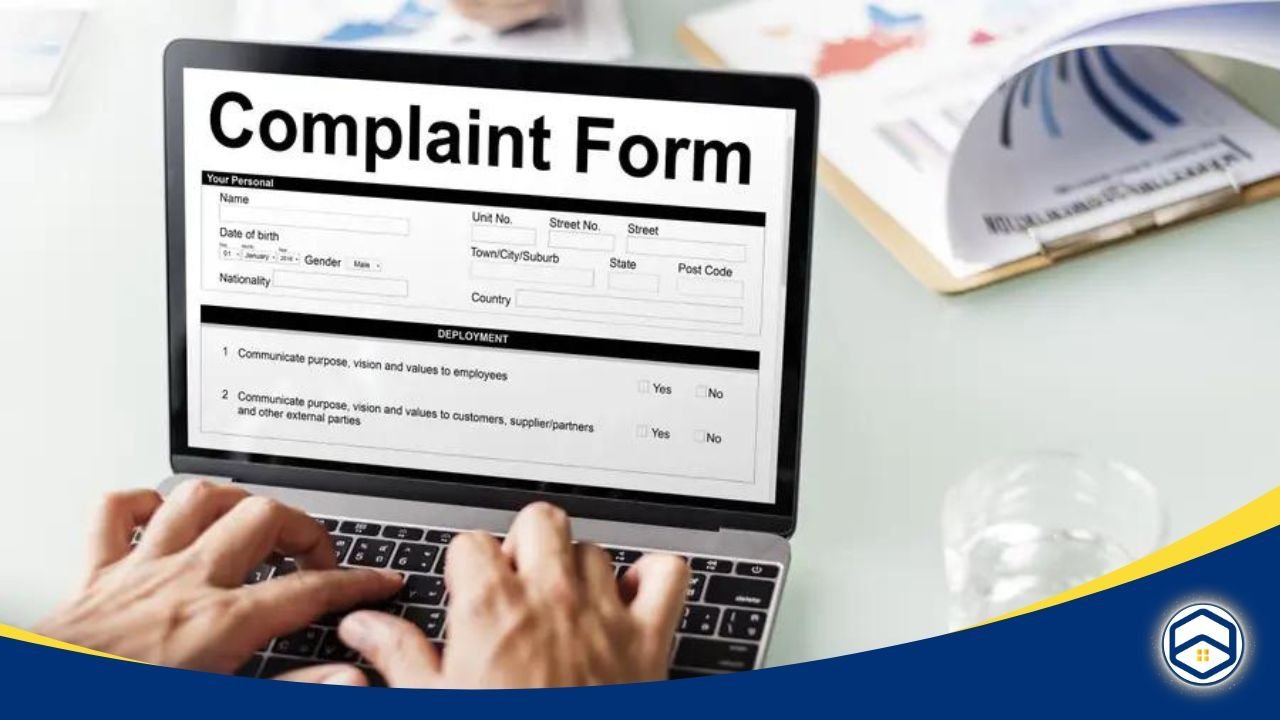In the dynamic landscape of real estate management, ensuring tenant satisfaction is paramount. Happy tenants not only lead to higher retention rates but also contribute to positive word-of-mouth, attracting new tenants and enhancing property value. But how can property managers effectively measure tenant satisfaction? Understanding and tracking key metrics for measuring tenant satisfaction is the cornerstone of this endeavor.
1. Occupancy Rates
Maintaining high occupancy rates is a clear indicator of tenant satisfaction, making it one of the fundamental key metrics for measuring tenant satisfaction. According to data from the U.S. Census Bureau and the Department of Housing and Urban Development (HUD), properties with satisfied tenants typically experience lower turnover rates, resulting in consistently high occupancy levels. Tracking occupancy rates over time allows property managers to gauge the effectiveness of their tenant satisfaction initiatives and adjust their strategies accordingly.

As such, property managers must continuously monitor and analyze occupancy rates to identify any potential issues affecting tenant satisfaction and take proactive measures to address them, ensuring long-term tenant retention and property value appreciation. This emphasizes the importance of including key metrics for measuring tenant satisfaction in strategic planning and decision-making processes.
2. Lease Renewal Rates
A high lease renewal rate signifies that tenants are content with their living or working environment, indicating a positive tenant experience. Real estate data analysis companies such as Yardi Matrix provide valuable insights into lease renewal trends across different markets, offering property managers access to comprehensive data and benchmarking tools, which are essential key metrics for measuring tenant satisfaction. By monitoring lease renewal rates, property managers can gain a deeper understanding of tenant preferences and satisfaction levels.

Analyzing lease renewal patterns allows property managers to identify areas for improvement and tailor their services to meet tenant needs more effectively. For instance, if a particular segment of tenants consistently opt not to renew their leases, property managers can investigate the underlying reasons, whether it’s related to maintenance issues, amenities, or customer service.
Moreover, tracking lease renewal rates over time enables property managers to assess the impact of their tenant satisfaction initiatives and adjust their strategies accordingly. A steady increase in lease renewals suggests that these initiatives are resonating with tenants, leading to enhanced loyalty and prolonged occupancy. Conversely, a decline in lease renewal rates may indicate areas requiring attention and improvement, prompting property managers to implement corrective measures to enhance tenant satisfaction and retention. Therefore, lease renewal rates serve as vital key metrics for measuring tenant satisfaction and guide property managers in optimizing their services to meet tenant expectations effectively.
3. Maintenance Response Time
Timely maintenance resolution is crucial for tenant satisfaction and plays a significant role in shaping their overall experience within a property, making it one of the essential key metrics for measuring tenant satisfaction. The National Multifamily Housing Council (NMHC) reports that fast and efficient maintenance services positively impact tenant retention, contributing to a positive perception of the property management’s responsiveness and commitment to tenant well-being.

Property managers can track average response times and resolution rates to ensure prompt attention to tenant requests. By implementing robust maintenance tracking systems, property managers can efficiently manage work orders, prioritize urgent requests, and allocate resources effectively. Analyzing these metrics allows property managers to identify bottlenecks in the maintenance process and streamline operations to enhance overall efficiency.
Moreover, tracking maintenance response time provides property managers with actionable insights into service quality and performance. Consistently meeting or exceeding service level agreements (SLAs) demonstrates the property management’s dedication to tenant satisfaction and fosters trust and confidence among tenants.
4. Tenant Feedback Surveys
Direct feedback from tenants provides invaluable insights into their satisfaction levels and areas for improvement, serving as a crucial component of effective property management strategies and integral key metrics for measuring tenant satisfaction. By actively soliciting feedback, property managers demonstrate their commitment to listening to tenant concerns and continuously improving the living or working environment.

Utilizing platforms like SurveyMonkey, Google Forms, or dedicated tenant feedback portals, property managers can administer regular satisfaction surveys to gauge tenant sentiment across various aspects of their experience, including maintenance responsiveness, amenities, customer service, and overall property satisfaction. These surveys can be tailored to address specific areas of concern or measure satisfaction with recent improvements or initiatives.
Analyzing survey data allows property managers to identify trends, patterns, and areas of opportunity for enhancement. By aggregating and synthesizing feedback from multiple tenants, property managers can gain a comprehensive understanding of tenant preferences and pain points, enabling them to prioritize initiatives that have the greatest potential to positively impact satisfaction levels.
Furthermore, soliciting direct feedback fosters transparency and fosters a sense of collaboration between property management and tenants. By actively engaging tenants in the decision-making process and demonstrating responsiveness to their feedback, property managers can cultivate a supportive community environment that enhances tenant satisfaction and retention, ultimately contributing to the long-term success and profitability of the property. Therefore, incorporating tenant feedback surveys as key metrics for measuring tenant satisfaction is essential for property managers seeking to optimize tenant experiences and drive property performance.
5. Net Promoter Score (NPS)
The Net Promoter Score (NPS) stands as a pillar in measuring customer loyalty and satisfaction, transcending industry boundaries with its simplicity and effectiveness. This metric, widely embraced across various sectors, including real estate, offers property managers a clear and concise method for evaluating tenant sentiment.

By posing a straightforward question to tenants – “On a scale of 0 to 10, how likely are you to recommend our property to a friend or colleague?” – property managers can gauge the level of advocacy and loyalty among their tenant base. Calculating the NPS involves categorizing respondents into promoters (scoring 9-10), passives (scoring 7-8), and detractors (scoring 0-6), then subtracting the percentage of detractors from the percentage of promoters.
Scores above 50 are generally considered excellent, indicative of high levels of tenant satisfaction and a strong likelihood of positive word-of-mouth referrals. Conversely, scores below 50 may signal areas for improvement and warrant closer examination of underlying issues impacting tenant satisfaction.
Utilizing the NPS as one of the key metrics for measuring tenant satisfaction empowers property managers to benchmark their performance against industry standards and track changes in tenant sentiment over time. By consistently monitoring NPS scores and soliciting feedback from tenants, property managers can identify trends, address concerns, and implement targeted initiatives to enhance overall satisfaction and loyalty.
6. Amenities Utilization Rates
Amenities serve as a cornerstone of tenant satisfaction, offering added value and enhancing the overall living or working experience within a property, making them essential key metrics for measuring tenant satisfaction. Analyzing data on amenities utilization, encompassing facilities such as fitness centers, community spaces, recreational areas, and shared workspaces, provides property managers with valuable insights into tenant preferences and behavior.
By tracking amenities utilization rates, property managers can identify which amenities resonate most with tenants and are utilized most frequently. This data allows for informed decision-making regarding amenities offerings, allocation of resources, and strategic investments to optimize tenant satisfaction and maximize property value.
For instance, if data reveals a high utilization rate for fitness centers but minimal usage of communal spaces, property managers can reallocate resources to enhance the quality and accessibility of fitness facilities while exploring opportunities to repurpose underutilized spaces or introduce new amenities that better align with tenant preferences.
Moreover, amenities utilization rates serve as a barometer of tenant engagement and community dynamics within a property, highlighting their significance as key metrics for measuring tenant satisfaction. Properties with high utilization rates for communal amenities often foster a sense of belonging and connectivity among tenants, contributing to a vibrant and cohesive community environment that enhances overall tenant satisfaction and retention.
7. Keeping Properties In Good Repair
According to the United States Department of Housing and Urban Development (HUD), building safety is a fundamental concern for both property managers and tenants. HUD emphasizes the importance of regular inspections to ensure compliance with federal housing quality standards, including those related to safety. These inspections cover various aspects such as the presence and functionality of smoke detectors, carbon monoxide detectors, and proper emergency exits.
Furthermore, HUD provides guidelines for property managers on maintaining building safety, including recommendations for routine maintenance and repairs to address potential hazards. This includes measures to mitigate fire risks, such as ensuring the proper installation and maintenance of fire suppression systems and conducting electrical inspections to prevent electrical fires. By following these guidelines and implementing best practices, property managers can enhance building safety and contribute to the overall satisfaction and well-being of tenants.
8. Effective Complaints Handling
Maintaining building safety is a core responsibility outlined by the Occupational Safety and Health Administration (OSHA) in the United States. OSHA regulations mandate regular inspections to identify and mitigate hazards that could jeopardize the safety of occupants. These inspections encompass various aspects, including fire safety measures, structural integrity, and electrical systems.

Additionally, the National Fire Protection Association (NFPA) provides standards and guidelines for ensuring building safety, covering areas such as fire prevention, emergency preparedness, and proper maintenance of safety equipment. Adherence to NFPA standards is crucial for property managers to minimize risks and ensure the safety of tenants.
Furthermore, the Centers for Disease Control and Prevention (CDC) offers resources and recommendations for maintaining building safety, particularly concerning issues such as indoor air quality, lead exposure prevention, and mold remediation. By following OSHA, NFPA, and CDC guidelines, property managers can effectively prioritize building safety and provide tenants with secure and healthy living environments.
9. Respectful and Helpful Tenant Engagement
Respectful and helpful tenant engagement is underscored by the Fair Housing Act enforced by the U.S. Department of Housing and Urban Development (HUD). This legislation prohibits discrimination in housing based on factors such as race, color, religion, national origin, sex, disability, and familial status. Property managers must adhere to these regulations to ensure fair and respectful treatment of all tenants.
Additionally, HUD offers guidance on fostering positive tenant-landlord relationships through effective communication and conflict resolution strategies. By implementing these practices, property managers can cultivate a supportive environment where tenants feel valued and heard.
Moreover, the Tenant Rights and Responsibilities Handbook provided by many state housing agencies outlines tenants’ rights to fair treatment and respectful communication from property managers. By upholding these standards and promoting open dialogue with tenants, property managers can enhance tenant satisfaction and foster a sense of community within their properties.
10. Responsible neighbourhood management
Responsible neighborhood management is supported by various government agencies and community organizations in the United States. Local governments often establish ordinances and zoning regulations to maintain the quality of neighborhoods, including standards for property maintenance, noise control, and waste management.
Additionally, organizations such as Neighborhood Associations and Community Development Corporations play a vital role in promoting responsible neighborhood management by facilitating community engagement, organizing events, and advocating for neighborhood improvements.
Furthermore, programs like the Community Oriented Policing Services (COPS) initiative, administered by the U.S. Department of Justice, emphasize collaborative efforts between law enforcement and community members to address safety concerns and enhance neighborhood livability.
By aligning with local ordinances, participating in community organizations, and engaging in collaborative initiatives, property managers can contribute to responsible neighborhood management, fostering a positive environment for tenants and residents alike.
Measuring tenant satisfaction is a multifaceted endeavor that requires diligent tracking and analysis of key metrics for measuring tenant satisfaction. By leveraging data from reputable sources such as government agencies and real estate data analysis companies, property managers can gain valuable insights into tenant sentiment and make informed decisions to enhance satisfaction levels.
Investing in tenant satisfaction not only fosters long-term tenant relationships but also strengthens the overall success and profitability of real estate investments. By prioritizing the monitoring and optimization of key metrics for measuring tenant satisfaction, property managers can identify areas for improvement, tailor their services to meet tenant needs more effectively, and ultimately enhance tenant experiences.











